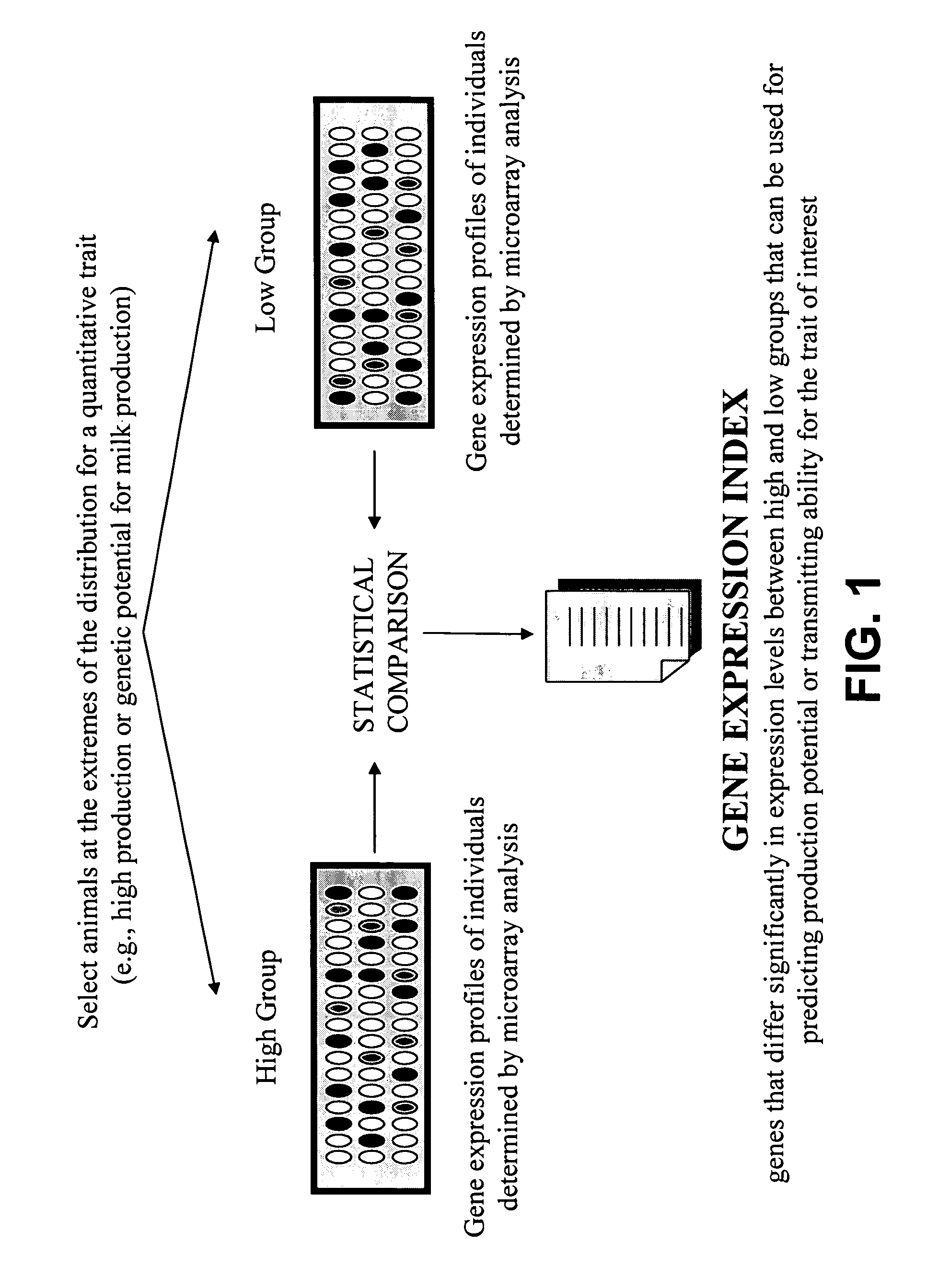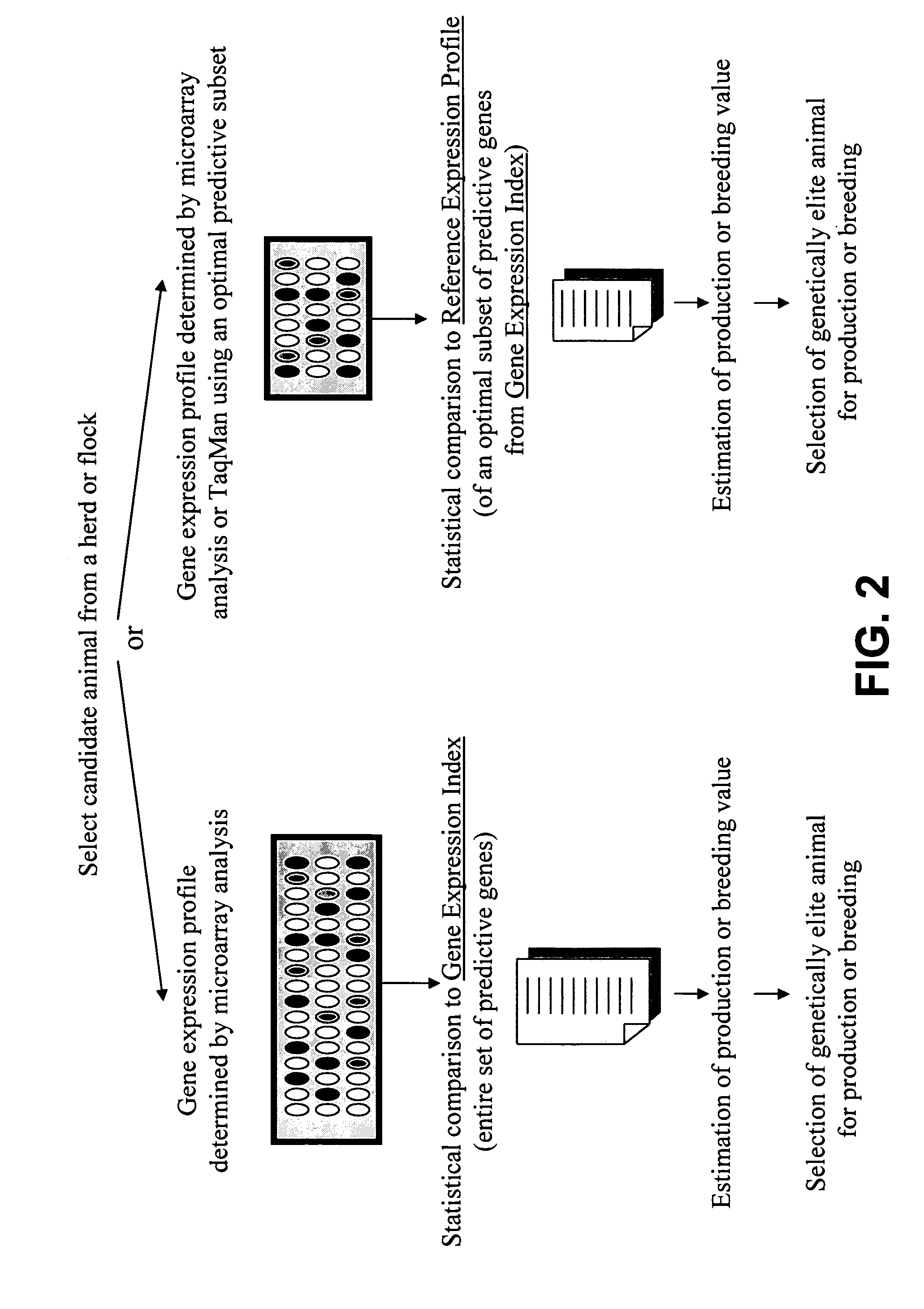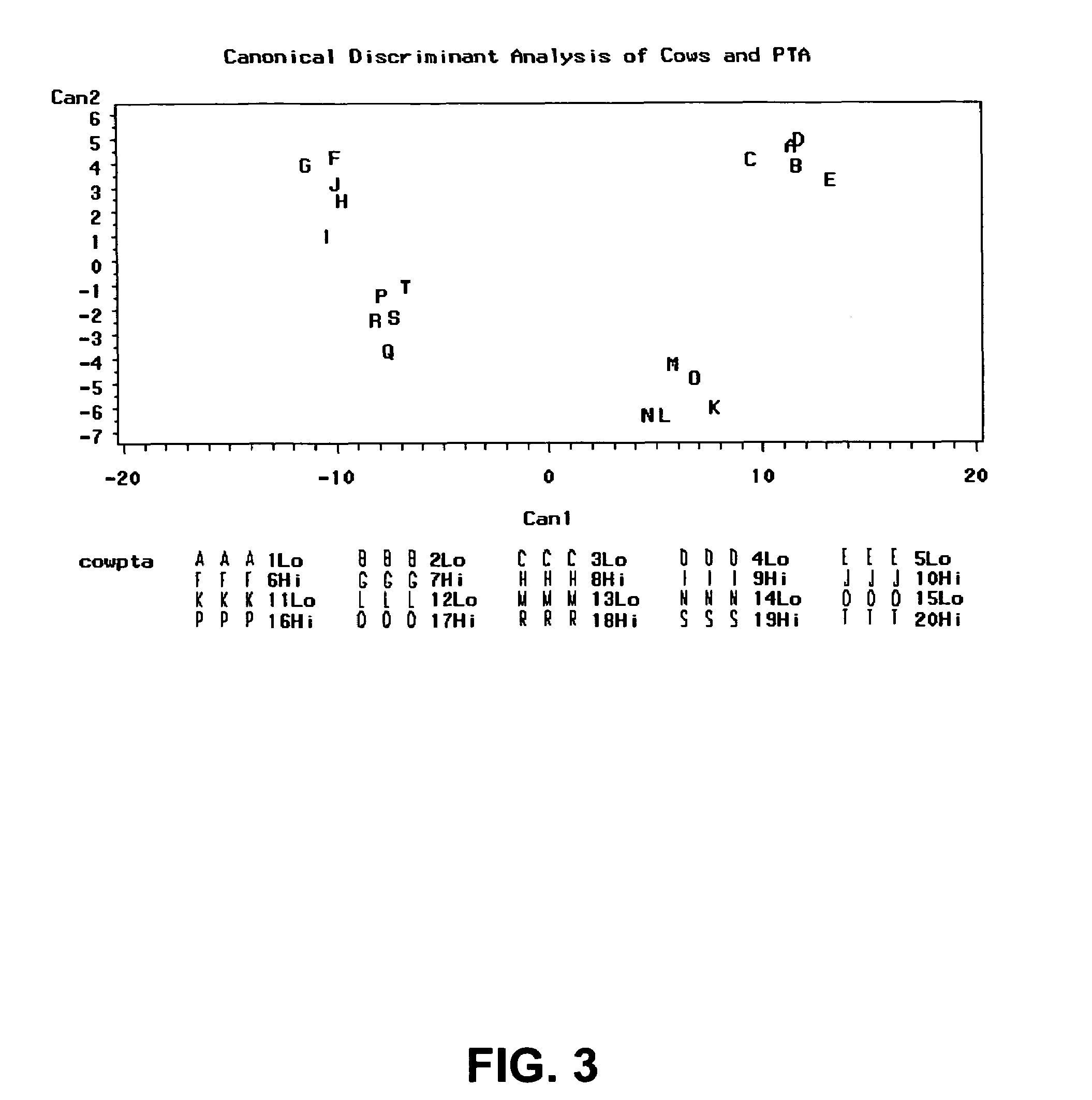Gene expression profiles that identify genetically elite cattle
a gene expression profile and gene expression technology, applied in the field of gene expression profiles that identify genetically elite cattle, can solve the problems of complicated objectives of traditional breeding programs, inability to achieve completely successful or predictable results, and slow statistics-based animal breeding methods, etc., to achieve the effect of improving economic important traits and high milk production
- Summary
- Abstract
- Description
- Claims
- Application Information
AI Technical Summary
Benefits of technology
Problems solved by technology
Method used
Image
Examples
example 1
Development of Microarrays for Predicting Milk Production
[0107]A microarray printed with about 7,500 cattle genes was used to profile gene expression in liver and peripheral blood leukocyte samples collected from two groups of heifers selected for significant differences in predicted transmitting ability (PTA) for milk production. The equations (“animal model”) for predictive PTAs are published and used by DHIA as part of their routine summaries. The PTAs of 20 heifers selected from the extremes of the PTA distributors were obtained from the DHIA records of milk yield (also correlated with fat and protein yields). The two groups of animals were age-matched (all heifers) and of the same breed (Holstein Friesian).
[0108]The microarray for gene expression profiling included a plurality of approximately 7,500 cDNAs spotted in duplicate representing a unique gene (cDNA) set of approximately 6,000 genes (see Materials and Methods). Creation of the arrays was performed essentially as descri...
example 2
Hybridization Analysis for Predicting Milk Production
[0114]cDNA samples from 10 heifers (see Materials and Methods) that were predicted to have high predicted transmitting ability for milk production based on breeding values of their parents, were tested 2 times (once with Cy3 dye and once with Cy5 dye) using a microarray slide printed with ˜15,000 spots, or approximate 7500 cDNA molecules in duplicate. Cy3 and Cy5 dyes are used to label cDNAs. Similarly, cDNA samples from 10 heifers, that were predicted to have low predicted transmitting ability for milk production based on breeding values of their parents were tested 2 times (once with Cy3 dye and once with Cy5 dye) using microarray printed with 7,500 genes in duplicate. Therefore, every low PTA ratio (normalized gene expression ratio for heifers with low PTAs) or high PTAs (normalized gene expression ratio for heifers with high PTAs) shown in TABLE I or TABLE II (see Sequences for clones in Tables I and II) refers to an average o...
example 3
Developing a Gene Expression Index for Phenomic Selection
[0134]The expression profiles of the genes in high PTA cows and low PTA cows (TABLES I-III) were ranked according to their p-values or FDR-adjusted p-value, i.e. gene expression profiles represented in TABLES I-III were classified based on statistical significance. For example, in blood samples from cows with predicted transmitting ability for high and low milk production, a total of 357 genes (or partial DNA fragments representing those 357 genes) were found to differ significantly between the groups at <FDR adjusted p-value of 0.29 and approximately 25 genes at <0.051 FDR-adjusted p-value (TABLE I). Any other relevant statistical method can be used to rank the genes.
[0135]In liver samples from cows with predicted transmitting ability for high and low milk production, a total of 10 genes were found to differ significantly between the groups at ≦0.4 FDR-adjusted p-value (TABLE II). The genes listed in TABLES I-III are part of ...
PUM
 Login to View More
Login to View More Abstract
Description
Claims
Application Information
 Login to View More
Login to View More - R&D
- Intellectual Property
- Life Sciences
- Materials
- Tech Scout
- Unparalleled Data Quality
- Higher Quality Content
- 60% Fewer Hallucinations
Browse by: Latest US Patents, China's latest patents, Technical Efficacy Thesaurus, Application Domain, Technology Topic, Popular Technical Reports.
© 2025 PatSnap. All rights reserved.Legal|Privacy policy|Modern Slavery Act Transparency Statement|Sitemap|About US| Contact US: help@patsnap.com



